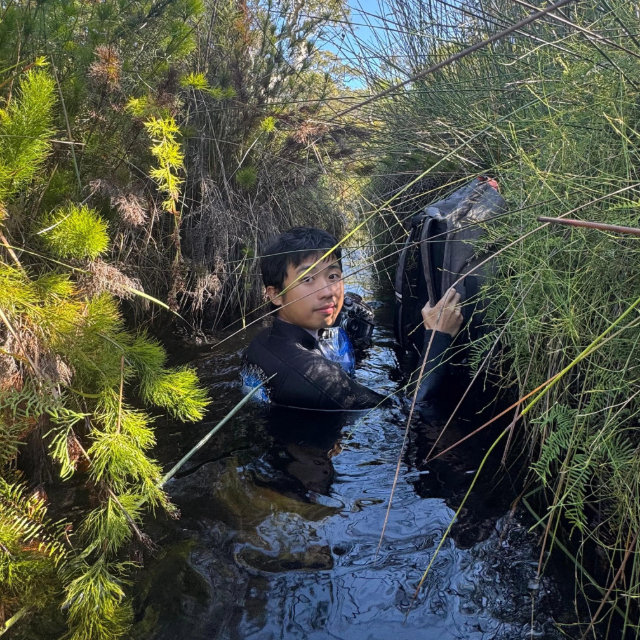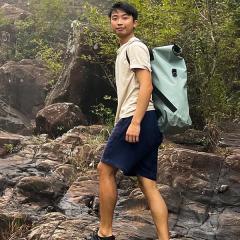CBCS Honours graduate
“What is zoology? You want to work in a zoo?”
That’s what people asked – often with genuine confusion – when I told them I wanted to study zoology. Like many kids in Hong Kong, where I am from, I was expected to pursue something stable for my career: global business, medicine, law. I kept my passion quietly on the side, and picked up wildlife photography, but convinced myself to follow a “safe” path, anything but muddy boots and field surveys.
Everything changed the summer I was selected from thousands of applicants for a sponsored field trip to Madagascar. Wandering through rainforest streams alongside ecologists and researchers, I witnessed conservation in action. I remember vividly on a 3am trek back to our lodge, I was exhausted yet exhilarated after spotting a few Madagascar bright-eyed frogs. In that moment, I knew I was willing to forgo the “stable” careers everyone expected and to pursue science. After graduating high school, I enrolled at The University of Queensland studying ecology and zoology.

Image credit: Lamuel Chung
The time I went undercover
During my undergraduate years, I threw myself into doing research projects. I initiated a project to investigate the highly unregulated wildlife trade market in Hong Kong – the ornamental freshwater fish trade. To do that, I literally went undercover. I visited pet shops rocking a cap, mask and a hidden microphone tucked beneath my mask to furtively record every species and price that were publicly available for consumers. It was conveniently during the COVID-19 pandemic, and I looked just like a normal citizen shopping for fish. I felt like a spy working for science, for the greater good. With the support of more researchers, this project revealed that we are exploiting a large number of freshwater fish species, many of which have unknown taxonomic or conservation status. The findings were presented at ICCB 2025 and are leading to a forthcoming publication.
My first trophy
During my Honours year in 2024, I investigated the diversity and distribution of amphibians and freshwater fishes on all Australian islands. My thesis topped my cohort and resulted in a publication in the journal Diversity and Distributions. All this wouldn’t have been possible without my supervisors and collaborators including Professor Salit Kark, Dr Simon Hart, Dr Peter Baxter, Michael Hammer and Peter Unmack.
Interests and other shenanigans
My broad interest lies in conservation biology, often focused on but not limited to freshwater systems and herpetofauna. This ranges from protecting their habitats to preventing their exploitation and endangerment. Freshwater habitats are incredibly biodiverse but often overlooked in conservation biology. In a way, I think I’m drawn to them partly for that reason. Now working as a research assistant for TERN, I hope to pursue a PhD to widen my skillsets to better contribute to conservation.
Outside of research, you’ll still find me out in the field, sometimes with a camera in hand. Don’t be surprised if you see me climbing a waterfall with a snorkel mask, tracking down fishes, amphibians, reptiles and many other “uncharismatic” species. I’ve spent more time than I’d care to admit staring at the bottom of streams, waiting for the perfect shot of a goby fish. Whether I’m diving into a dataset or into a creek, my motivation is the same: to make meaningful impact in conservation, not just for us or future generations, but for the intrinsic beauty of these ecosystems.
To keep up to date on our latest events, check out our Bluesky and LinkedIn.

